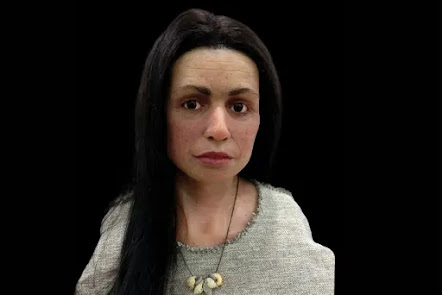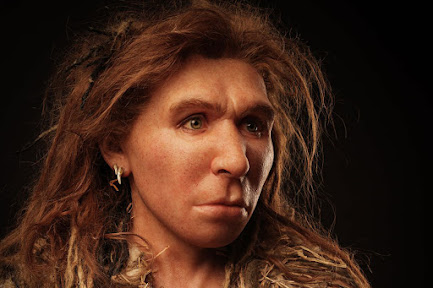It is always amazing to realize how complex is the system that we call the "Ecosphere". And how the system's complexity keeps its parameters within the limits needed for life to exist and prosper. It is the concept of "Gaia" as it was proposed by James Lovelock and Lynn Margulis. The ecosystem is in homeostasis and tends to maintain relatively constant parameters by means of a tangle of internal feedbacks, as all complex adaptive systems ("CAS") do.
But homeostasis doesn't mean perfect stability. The system's parameters may oscillate - even wildly - before the internal feedbacks can bring them back to the "good" values. Sometimes the system gets close to its limits and it may well be that, at times in its long history, the ecosystem risked going over the edge and then Gaia could "die." This seems to be a common destiny for extrasolar planets, as recently argued by Chopra and Linewaver.
A recent paper by Galbraith and Eggleston on Nature starts from these concepts, noting how the concentration of CO2 in the atmosphere never went below ca. 190 ppm during the past 800,000 years. That happened in correspondence with the lowest temperatures ever observed during that period: the planet was going through a harsh ice age.
About these ice ages, there is an interesting point related to the system's feedback. The more ice there is, the more reflective the planet's surface becomes (more exactly, the planetary albedo increases). But, the more reflective the planet's surface is, the cooler the planet becomes. So, we have an enhancing feedback that may transform the whole planet into a single, frozen ball: "snowball earth". It has happened, although possibly not completely, at least twice in the history of Earth. It was during the period we call, appropriately "Cryogenian," from 720 to 635 million years ago. It was not a real "snowball" -- not all of Earth was covered in ice. But what was not under the ice was a frozen desert. To give you some idea of the fascination of this subject, here is an excerpt from the abstract of a paper by Hoffmann et al. on "Science"
"....the small thermal inertia of a globally frozensurface reverses the annual mean tropical atmospheric circulation, producing an equatorial desert and net snow and frost accumulation elsewhere. Oceanic ice thickens, forming a sea glacier that flows gravitationally toward the equator, sustained by the hydrologic cycle and by basal freezing and melting. Tropical ice sheets flow faster as CO2rises but lose mass and become sensitive to orbital changes. Equatorial dust accumulation engenders supraglacial oligotrophic meltwater ecosystems, favorable for cyanobacteria and certain eukaryotes. Meltwater flushing through cracks enables organic burial and submarine deposition of airborne volcanic ash. The sub-glacial ocean is turbulent and well mixed, in response to geothermal heating and heat loss through the icecover, increasing with latitude. Terminal carbonate deposits, unique to Cryogenian glaciations, are products of intense weathering and ocean stratification. "
Can you imagine the Earth in these conditions? A wasteland of dry deserts and ice sheets. At that time, there were no multicellular creatures and life may have survived in hot pockets, maybe volcanic lakes, where it was still possible to find liquid water.
We may have been dangerously close to a new snowball Earth episode during the past million years or so. Not a trifling matter because today the ecosphere is much more complex than it was at the time of the Cryogenian. A new snowball Earth would likely cause all vertebrate lifeforms to go extinct. It is not just a question of being too cold: the limit of concentration of CO2 that permits plants to perform photosynthesis at a reasonable rate is considered to be around 150 ppm, at least for the most common kind of plants. Under that value, all multicellular plants die, and with them all animal life. Only single-celled creatures could eke out a precarious existence in those conditions.
But something prevented the ice sheets to expand all the way to envelop the whole Earth and, at the same time, prevented the CO2 concentration to go below 190 ppm. What was that? Several hypotheses are possible. Galbraith and Eggleston favor a biological one, saying that:
In terrestrial ecosystems, carbon fixation by plants is limited by low ambient CO2 (ref. 31). On this basis, ref. 12 proposed that CO2-limitation had significantly reduced plant-mediated silicate weathering during low-CO2 intervals of the past 24 million years, thereby enforcing a lower bound on the ocean–atmosphere carbon inventory over >10^5 yr timescales. Subsequent experiments have been consistent with this ‘carbon starvation’ mechanism, showing reduced weathering by tree-root-associated fungi under low CO2 (ref. 32). Although the feedback on silicate weathering would appear too slow to play a role on the 104 yr timescale of glacial CO2 minima 30, it may be possible that strongly reduced weathering rates lowered ocean alkalinity (thereby decreasing CO2 solubility) on a millennial timescale. Alternatively, reduced photosynthesis rates during the LGM (last glacial maximum) would have slowed the accumulation of terrestrial biomass14, consistent with estimates for lower terrestrial primary production rates33. By slowing the accumulation of carbon in vegetation and soils, this would have provided a stabilizing feedback via an increase of the ocean–atmosphere carbon pool.
Complicated stuff, right? But, basically, the idea is that CO2 is slowly drawn down from the atmosphere by a reaction with rocks (silicates), forming carbonates. This reaction is called "weathering" and it is favored by plants, whose roots provide a good environment for it to take place. Fewer plants, less CO2 drawdown. At the same time, a smaller global biomass means that the quantity of CO2 stored in it becomes lower and this extra carbon most likely ends up in the atmosphere as CO2. So, there are two feedbacks embedded in the system that tend to stabilize its temperature. But, as you may understand from the text by Galbraith and Eggleston, it is even more complicated than this! In any case, these stabilizing geobiological feedbacks oppose the ice/albedo feedback and tend to slow down the glaciation before the two sides of the ice sheet touch each other at the equator.
But suppose that the Earth really became the snowball that some studies claim to have observed: how did it recover? If it is frozen, it is frozen. Maybe not completely dead, but poor Gaia was reduced to a minor sprite inhabiting hot springs. How could Earth return to the lush ecosphere we are used to?
There is an explanation: it is because volcanoes do not care whether the Earth's surface is frozen or not. They continue pumping CO2 and other greenhouse gases into the atmosphere. Again from Hofmann et al.
“If a global glaciation were to occur, the rate of silicate weathering should fall very nearly to zero (due to the cessation of nor-mal processes of precipitation, erosion, and runoff), and carbon dioxideshould accumulate in the atmosphere at whatever rate it is releasedfrom volcanoes. Even the present rate of release would yield 1 bar ofcarbon dioxide in only 20 million years. The resultant large green houseeffect should melt the ice cover in a geologically short period of time”[(69), p. 9781]. Because Snowball Earth surface temperatures are below the freezing point of water everywhere, due to high planetary albedo,there is no rain to scrub CO2(insoluble in snow) from the atmosphere."
Note one subtle detail: if temperatures were to go below the freezing point of CO2 (-78 C) even in small regions at the poles, that would form a nearly infinite CO2 sink. And that would be "snowball forever" -- maybe it would have made the Goddess Khione happy, but it didn't happen. Possibly, that was too cold even for a Winter Goddess!
In any case, it seems that CO2 was pumped into the atmosphere by volcanoes, maybe it was the work of the volcanic form of Gaia, the goddess Pele, known for her habit of taking lava showers.
When the CO2 concentration arrived at levels hundreds of times those of the present-day atmosphere, the result was a cataclysmic rapid collapse of the glaciers and a rise in temperatures. Not only the Earth's ecosystem was saved from a cold death, but it rebounded spectacularly: it was now the time of the "metazoa," the formal term indicate animals. There came the Cenozoic, in which we are still living, with its incredible variety of lifeforms when plants and animals colonized the continental lands.
You see how the job of Gaia is not so simple. it involves a delicate balance of many factors. Some tend to stabilize the system, while others tend to destabilize it. During the past 15 million years or so, cooling factors took the lead and slowly pushed Earth to lower and lower CO2 concentrations and, with that, lower temperatures.




















